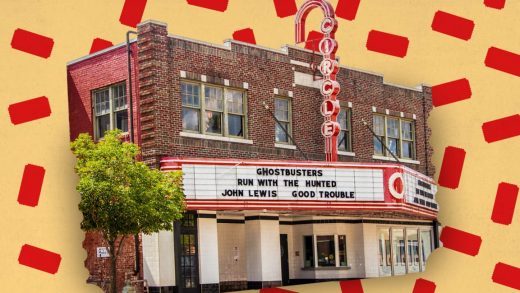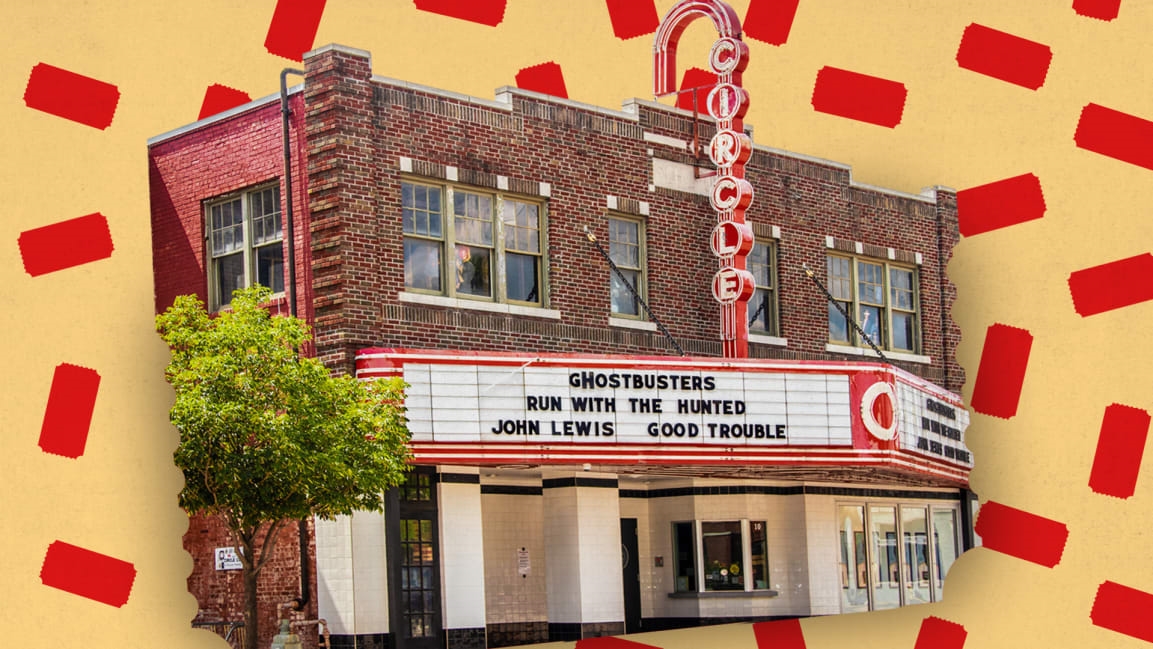What we lost when we lost box office receipts in 2020
It’s almost embarrassing, how much I miss going to the movies.
The airplane-type relief of making it to your seat on time. The conversations that drop as soon as the lights dim. The unified crowd reaction to a trailer for a movie that seems to have been made for no one. These little moments are as crucial to the filmgoing experience as butter is to popcorn. The hole in my heart where they used to be only aches more as our bleak near-future of exclusive home-viewing is further cemented.
But while a great many Alamo Drafthouse Season Pass-holders have lamented their theatrical eviction this year, one victim of the moviepocalypse has gone completely under-recognized.
It’s time someone spoke up for the box-office spectators.
Until March 2020, I used to check the website Box Office Mojo every Sunday afternoon, to see which films made how much money over the weekend. (For the uninitiated, box-office analysts are able to produce startlingly accurate estimates for the entire weekend by 1 p.m. ET on Sundays.) Technically, I could still participate in this weekly ritual. Hundreds of theaters are still open, so each weekend does produce box-office receipts—they’re just meaningless now, since the vast majority of Americans stopped going to the movies in March and never returned.
Having paid attention to box-office receipts since at least the late-’90s, though, it feels disorienting to just . . . not do that anymore. Observing box-office performance was an integral part of my cinema-obsessed life. I have more vivid nostalgia for seeing Titanic stay in the top spot every week for the first few months of 1998 than I do for the experience of seeing Titanic.
Early on in the pandemic, I would feel a phantom curiosity every Sunday afternoon. Isn’t there something I’m supposed to do right about now? It was a tiny, unscratchable itch that has since numbed to almost nothing. But it’s still there.
I miss the feeling of a continuous curiosity regularly sated, and I know I’m not alone.
An editor at Fast Company, whom I won’t out as a fellow nerdlinger, revealed that he became obsessed with box-office numbers nearly a decade before I did, and even took part in a “fantasy Hollywood” betting pool with a group of friends, guessing the results each week using tracking numbers as the betting line. On the podcast Blank Check, which explores a rotating lineup of directors’ filmographies, each episode ends with The Box Office Game, wherein actor and comedian Griffin Newman guesses the top-five films during a specific weekend in a specific year, based on clues provided by his co-host, Atlantic film critic David Sims. The game stems from Newman’s encyclopedic movie knowledge, along with his decades-long stint in the box office Night’s Watch. There are many of us, if few who are as dedicated as him.
Not all forms of box-office spectatorship are the same. I do not miss, for instance, wondering whether the new Marvel movie would smash the previous Marvel movie’s record. Those kinds of horse races celebrated the dominion held by a scarily popular genre during what now looks, through the lens of COVID-19, like its pre-fall-of-the-Roman-Empire phase. At the moment, the Avengers: Endgame box-office haul reminds me of when *NSYNC and Backstreet Boys competed against each other and Britney Spears to break CD sales records 20 years ago, just before CDs became something you couldn’t give away.
At their worst, the weekly box office numbers comprise a gaudy financial measuring stick that determines the value of art. If those numbers are sufficiently impressive, the artist behind them has a charmed path toward continuing to make art. If not, well, good luck out there.
At their best, though, the box office receipts add a quantitative metric to a subjective form, which makes being a cinephile feel more like being a sports fan. While no movie can be said to be ’empirically’ good, the weekly numbers offer an important vector for assessing one’s success. You weigh the critical and cultural reception with the raw data, factoring in budget and expectations based on previous work, and eventually you arrive at a concrete verdict.
The math on what makes a movie a hit, though, is fascinatingly amorphous.
The much-adored Uncut Gems making $50 million worldwide, for instance, is a huge win, even though Adam Sandler’s next most recent non-animated theatrical release, 2015’s widely panned Pixels, made literally five times as much money and was considered a dud. Cinematic success exists on a sliding scale that is hard to define, but which any seasoned box-office spectator just internalizes after a while. Once a film fanatic has honed those instincts, it feels odd to no longer have use for them, like being fluent in a dead language.
I miss charting the phenomenon of over-performing sleeper hits like Ready or Not or Good Boys.
I miss seeing word of mouth spread over several weeks on a film like Peanut Butter Falcon, making it feel like the audience has a real say in choosing what wins, rather than merely dangling at the whim of marketing forces.
And I miss feeling judge-y and vindicated when movies that seem misguided or cynically motivated, like Men in Black: International or Life Itself, become huge flops.
Even before the pandemic, though, weirdos like myself were already struggling to assess whether a movie was a success if it never saw a theatrical release.
Ever since Netflix started producing original movies and Amazon became a deep-pocket bidder at film festivals, cinematic success has come to depend on more nebulous factors. We will never know, for instance, whether Triple Frontier or Bird Box would have connected with audiences if people had to leave their houses and pay money to see them; we just have to take Netflix’s word that they were watched by many, many millions of viewers.
This state of affairs trained us for a year in which no spectator can say for sure whether movies like The Lovebirds, An American Pickle, Greyhound, King of Staten Island, or Mulan were hits. All we have are reviews, occasional scraps of questionable viewership numbers, and the amount of conversation each of us sees in our respective social-media bubbles. None of these are as reliable indicators of success as they would be if cross-referenced with box-office receipts. We will never know if Borat 2 would have been the worthy box office sensation its rapturous reception suggests, or if Wonder Woman 1984 would have been the surprise flop its intense Twitter roasting indicates.
On the other hand, we also never have to know whether Andy Samberg’s much-adored Palm Springs would have been the mid-size indie hit that broke his bad luck streak in theaters, or if it would have become another cult classic like Popstar or Hot Rod.
At the moment, movie theaters are sparsely attended, and they’re only going to be less so as we venture deeper into the pandemic winter. Although widespread vaccination is apparently right around the corner, people will likely still be wary of going back into theaters for a while.
But they will be back. This reprieve from box office analysis is only temporary.
Whatever the next iteration of normal is, Warner Bros deal be damned, going to the movies will play a major part of it. And until then, determining how much of a film’s disappointing box office take to blame on the post-COVID-19 climate might just become a fresh new metric to puzzle over.
(27)



